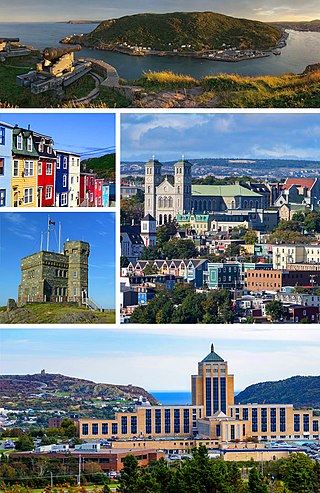
St. John's is the capital and largest city of the Canadian province of Newfoundland and Labrador, located on the eastern tip of the Avalon Peninsula on the island of Newfoundland.
Sir Richard Whitbourne was an English colonist, mariner and writer.

Stephenville is a town in Newfoundland and Labrador, Canada, on the west coast of the island of Newfoundland.
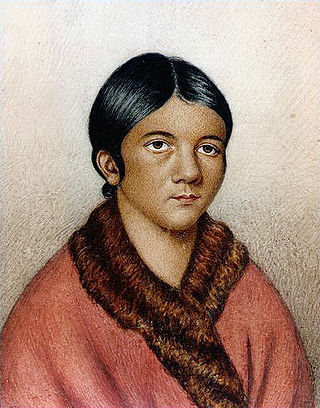
Shanawdithit, also noted as Shawnadithit, Shawnawdithit, Nancy April and Nancy Shanawdithit, was the last known living member of the Beothuk people, who inhabited Newfoundland, Canada. Remembered for her contributions to the historical understanding of Beothuk culture, including drawings depicting interactions with European settlers, Shanawdithit died of tuberculosis in St. John's, Newfoundland on June 6, 1829.

Marystown is a town in the province of Newfoundland and Labrador, Canada, with a population of around 5,000. Situated 306 km from the province's capital, St. John's, it is on the Burin Peninsula. Until the early 1990s, its economy was largely based on shipbuilding, and it is due in part to this that the town experienced a population increase of 295% in just over a decade. The town was also dependent on the fish plant for employment.
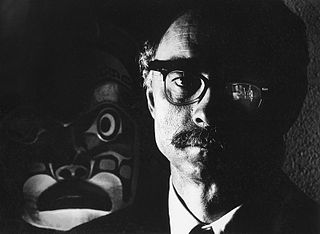
James Crerar Reaney, was a Canadian poet, playwright, librettist, and professor, "whose works transform small-town Ontario life into the realm of dream and symbol." Reaney won Canada's highest literary award, the Governor General's Award, three times and received the Governor General's Award for Poetry or Drama for both his poetry and his drama.
Paul O'Neill was a writer, historian and former CBC producer. He wrote many books on the history of Newfoundland. O'Neill was born in St. John's, Newfoundland, and raised in Bay de Verde until the age of 8 when his family moved to St. John's.
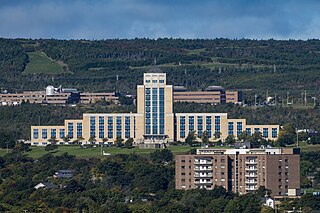
The Confederation Building serves as the home of the Newfoundland and Labrador House of Assembly. It is located on Confederation Hill overlooking Newfoundland and Labrador's capital city, St. John's. The brick- and concrete-clad building has 11 stories and is 64 metres (210 ft) tall. It was completed in 1960 at a cost of $9 million to replace the Colonial Building. A lantern is located at the top of the copper roof of the central tower and acts as a beacon when turned on at night.
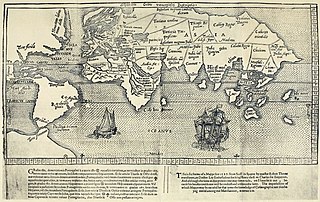
John Rut was an English mariner, born in Essex, who was chosen by Henry VIII to command an expedition to North America in search of the Northwest Passage. On 10 June 1527 he set sail from Plymouth with two ships, Samson and Mary Guilford. The voyage was arranged by Cardinal Wolsey at the wishes of Robert Thorne, a Bristol merchant. Samson was commanded by Master Grube and Mary Guilford was commanded by Rut.
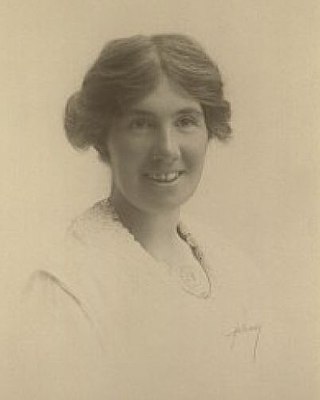
Ethel Gertrude Dickenson was an educator and nurse born in St. John's, Newfoundland. She is noted as being one of the Remarkable Women of Newfoundland and Labrador for her tireless work and death in the care of patients during the outbreak of Spanish influenza at St. John's in 1918.
The Newfoundland Natives' Society refers to a long-defunct patriotic organization in Newfoundland established in 1840 to protect the rights and privileges of Newfoundland-born and other longtime residents in dealings with colonial civil servants, big business owners who were not always residents, and newcomers who considered themselves much higher in the social structure than the locals even though the vast majority of locals were of the same British Isles ancestry as the new arrivals. The society's official mandate was to advance the careers and interests of native-born and other long-time residents. Newfoundlanders, regardless of gender, ethnic origin, religious affiliation or social standing were welcomed as members. This marked the arrival of a new phenomenon, Newfoundland nationalism. Natives' Society branches existed in St. John's, Harbour Grace and Carbonear as well, it is thought, in other communities.
The Tely 10 Mile Road Race is a 10 mile road race held in the communities of Paradise, Mount Pearl and St. John's, Newfoundland and Labrador, Canada that attracts over 4000 runners annually. The race course often gets mistaken as 10 km. The race began in 1922 making it one of the oldest road races in all of Canada. The race was not run from 1940 to 1945 because of World War II; thus, the 2019 race was the 92nd in the event's history. Due to the COVID-19 pandemic, the in-person 2020 edition was also cancelled, and the 2021 event was held on October 31st.

Bowring Park is located in the Waterford Valley, St. John's, Newfoundland, Canada. Entrance to the park is via Waterford Bridge Road, passing a sculptured duck pond and a Peter Pan statue.

Johnny Burke (1851–1930) was a Newfoundland poet, singer, songwriter, and musician from St. John's, where he lived all his life. He was nicknamed the Bard of Prescott Street and wrote many popular songs that were released by folk singers in the 1930s and 1940s.
"Sonny's Dream" is a folk song written by Newfoundlander Ron Hynes in 1976. It tells the story of a man who wishes to fulfill his dreams, but is bound to his rural homeland by his family, particularly his lonely mother. Hynes wrote the song while on a roadtrip with his band in western Canada and based it on his uncle, Thomas "Sonny" O'Neill, who had taught him how to play guitar and had pushed him play music professionally. It was first recorded by The Wonderful Grand Band on their eponymous album, but appeared re-recorded on their second album Living in a Fog in 1981. Subsequent to the songwriter Ron Hynes' death, a crowd was organized for a singalong in Bannerman Park, St. John's in remembrance and celebration of his life.
John Callis was a 16th-century Welsh pirate. He was active in South Wales from Cardiff to Haverfordwest, often selling his prizes and cargo in the villages of Laugharne and Carew in Milford Haven, only a few miles south of Little Newcastle, Wales. His piratical career lasted for decades before pressure from neighbouring countries forced the government of England to take action and managed to capture him in 1576.
The architecture of St. John's, in Newfoundland and Labrador, Canada, has a style distinct from that of the rest of Canada, and its major buildings are remnants of its history and prestige as the first British colonial capital. The city of St. John's has had a long history, with inhabitation dating to the 16th century onwards. As the city grew, so, too, did the landscape. Buildings took a variety of styles according to the styles and means available to build the structures. Starting as a fishing outpost for European fishermen, St. John's consisted mostly of the homes of fishermen, sheds, storage shacks, and wharves. Of course, these structures were small and constructed out of wood. Like many other cities of the time, as the Industrial Revolution took hold and new methods and materials for construction were introduced, the landscape changed as the city grew in width and height. The Great Fire of 1892 destroyed most of the downtown core, and most residential and other wood-frame buildings date from this period. Often compared to San Francisco because of its hilly terrain and steep maze of residential streets, housing in St. John's is typically painted in bright colours, unlike most other parts of Canada.
The Prince of Wales Skating Rink, more commonly known as the Prince's Rink, was a domed wooden ice arena located on Factory Lane in St. John's, Newfoundland and Labrador, Canada, that operated for over 42 years. It was named in honour of Edward, the Prince of Wales and the eldest son of Queen Victoria. The historic Prince's Rink hosted the first thirty-eight St. John's senior hockey league championships and the first seven all-Newfoundland hockey championships before the building was destroyed by fire on November 28, 1941.
The St. John's Curling Club is a curling club in St. John's, Newfoundland and Labrador, Canada. The club plays at the RE/MAX Centre in Central St. John's, on Mayor Ave. It is the largest curling club in the province.
Victoria Park is a Victorian-era urban park located in St. John's, Newfoundland and Labrador and named for Queen Victoria. The park has street frontage on Water Street, Sudbury Street, Hamilton Avenue, and Angel Place, and occupies most of the block bounded by Water Street, Sudbury Street, Hamilton Avenue, Alexander Street.











